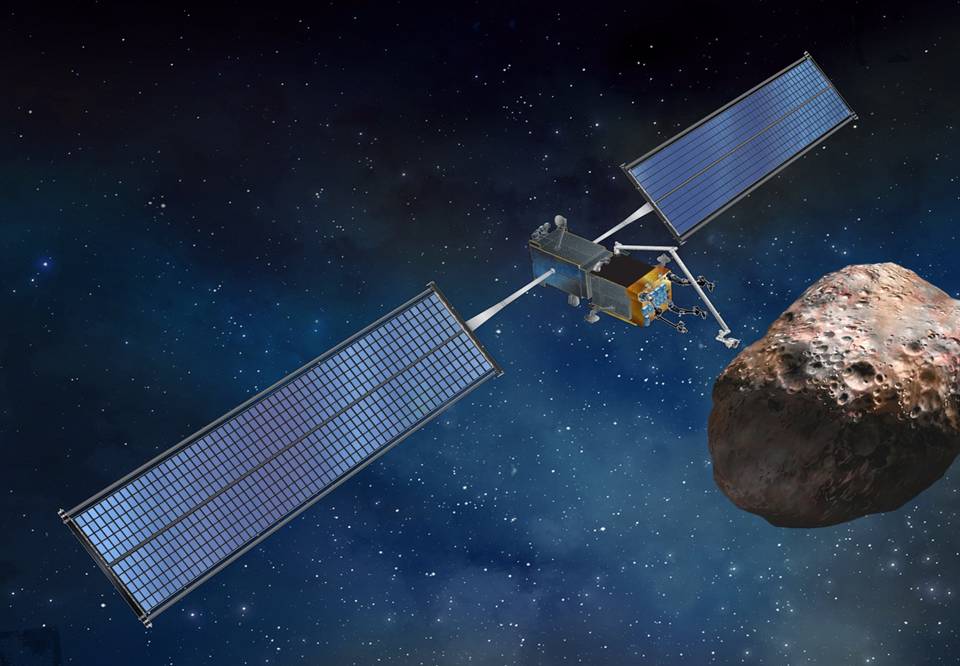
In a plan straight out of a sci-fi asteroid disaster movie, NASA will try to push an asteroid off-course by crashing a spaceship into it.
The DART spacecraft — which stands for Double Asteroid Redirection Test — is scheduled to launch on November 24 and will attempt to move an asteroid — or, to be more precise, a small moon orbiting an asteroid.
The target is Dimorphos, a little moon orbiting the Didymos asteroid, and is about 500 feet across. Didymos itself is about five times bigger, and could be a potential threat to Earth someday. It came within 5 million miles of us in 2003. When DART reaches it in September of 2022 it will be close again — within 7 million miles of us. It will be close enough that Earth-based optical telescopes will be able to measure the change in the little moon’s orbit.
“Not only is the DART mission a planetary defense demonstration, but so much of the spacecraft itself is new technology demonstration,” said Julie Schneringer, NASA launch site integration manager, in a statement.
The Didymos asteroid, though it will swing by relatively close to Earth, is not an actual threat, NASA said, but it’s a good opportunity to test the feasibility of pushing an asteroid off-course in the future.
That new technology includes a new type of an ion propulsion engine, NEXT, which stands for NASA’s Evolutionary Xenon Thruster. Ion engines generate thrust using electricity instead of burning rocket fuel. The new ion engine is three times as powerful as the NSTAR ion engines used on the Dawn and Deep Space 1 spacecraft.
The electricity that powers the ion engine will come from roll-out solar arrays. These arrays were first tested on the International Space Station in 2017, and this is the first time they’ll be used on a planetary spacecraft. They’re bigger, lighter and roll up into a smaller package than traditional solar arrays.
Jim DeLillo writes about tech, science, and travel. He is also an adventure photographer specializing in transporting imagery and descriptive narrative. He lives in Cedarburg, WI with his wife, Judy. In addition to his work for MetaStellar, he also writes a weekly article for Telescope Live.

